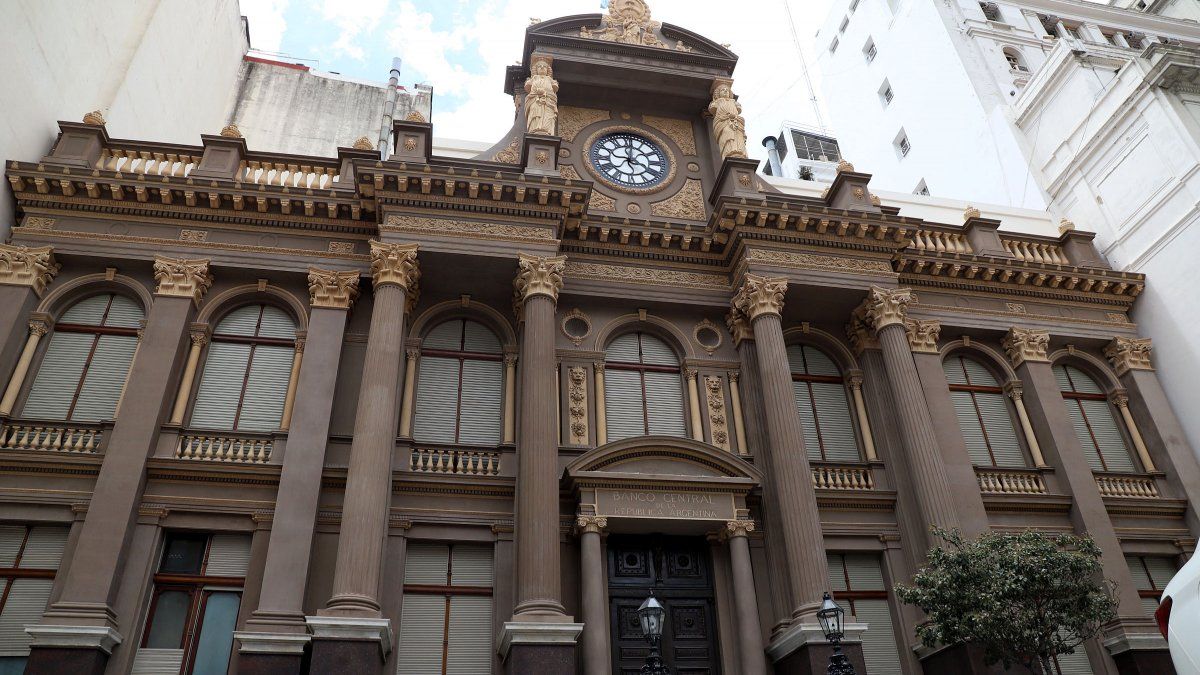This Wednesday, the Central Bank completed the placement of series 1 of Boprealthe dollar bonus for importers with which it seeks to channel the large stock of debt commercial, aspire pesos and create a bridge towards the implementation of a new monetary regime. The BCRA awarded the US$904 million that were pending after last week’s result. There were offers from 776 companies for a total of US$1,629 million, but only the remaining amount was awarded through proration.
Thus, it exhausted the US$5,000 million scheduled from the beginning for this first series, due in 2027, which had a series of tax and exchange incentives that were expanded after the setbacks in the first tenders. Without those “sweeteners”, which they won today. Now The economic team prepares the launch of the second stage of Bopreal.
As Ámbito learned, this Thursday the monetary authority aims to close the schedule and the mechanism for awarding the series 2 and 3, already start their placement together next week.
In Reconquista 266 and Hipólito Yrigoyen 250 they celebrated the result. Bopreal is a tool that plays multiple bands in the strategy of Javier Milei’s government to “dry up” the peso market, “sort” the debt for imports, dollarize a portion of the remunerated liabilities and set a range for the exchange gap. All in the direction of creating the framework to move towards a new monetary regime, such as the much-mentioned and questioned dollarization (for which today they do not have the conditions) or some alternative scheme.
For now, after a start with little appetite on the part of importers for this bonus that is subscribed with pesos but is payable in dollars (due to the reluctance to accept it on the part of their suppliers), finally in the last two weeks the economic team managed to place the US$5,000 million that it had planned for January. They helped the expansion of the gap at 50-60% and the rise of parities of Bopreal on the secondary market at US$67/US$69. This allowed companies, according to calculations by different analysts, to access the possibility of canceling their commercial debts abroad at an implicit exchange rate cheaper than the cash settlement rate (CCL). In fact, the result of this Wednesday’s auction coincided with a 2% decline in the CCL, to $1,244.
Sweeteners also had an impact: exemption from payment of PAIS tax, application to the payment of tax obligations, early redemption, exceptional access to the official dollar for up to a percentage of what was subscribed and the possibility of paying off the remaining part of the commercial liabilities in the future with the flow of its exports.
Bopreal: the second stage
For the stage that opens now, these sweeteners will no longer be on the table, as confirmed by official sources. The officials’ argument is that, since series 2 and 3 are shorter, they will not need these incentives to receive the expected flow of demand.
According to sources with knowledge of the matter, Bopreal’s seventh tender will be held, in principle, next week. The details of the placement will be known in the next few hours. The idea of the BCRA is to simultaneously auction series 2 and 3 throughout February in search of raising a total of US$5,000 million. The second will have a cap of US$2,000 million and the third, US$3,000 million.
The series 2 It will mature in June 2025, it will be amortized in twelve monthly installments starting in July 2024, it will not generate interest and it will not be listed on the secondary market. The series 3 It will mature in May 2026, it will be paid in three quarterly installments starting in November 2025, it will yield a rate in dollars of 3% per year and it will be quotable.
In series 2, SMEs will have priority access with commercial debts exceeding US$500,000. The rest of the small and medium-sized companies (80% of the total) will have direct access to the official exchange market to settle their liabilities in three installments starting on February 10. However, they know in the entity chaired by Santiago Bausili that To achieve significant demand in the next tenders they will depend on large companies, who have the bulk of the import debt and whom the Government will try to seduce, as it did in recent weeks. In addition, SMEs had difficulties until now for their foreign suppliers to accept the bonus.
“Series 2, since it is not listed on the secondary market, I do not think it will have much demand. Maybe it is a specific placement for a large company.. Even more so taking into account the facilities they provided for SMEs,” he considered. Nicolas Rivas, head trader and director of BAVSA. And he proposed that, perhaps, “if they see that they need because there is beginning to be a lot of demand for CCL for those who were left out, they will modify the conditions” because “the Government is pragmatic about that.”
exports-imports-trade-ship.jpg
Depositphotos
Commercial debt, strategy and problems for the industry
For the economic team, the signal that can be sent to the market with the second stage of Bopreal is key. It happens that this bonus is the tool with which it seeks to pave the way for lifting the exchange rate when the reserve equation improves.
Some voices, like that of the former Minister of Economy, Martin Guzmanpoint out Bopreal as a first step of the Government in search of dollarization the economy. “It is a set of operations to convert the remunerated liability of the Central Bank in pesos into a liability in dollars,” he said weeks ago and warned that it is a risky strategy because the BCRA does not issue that currency, in addition to warning about the impact that The fact that the change in the monetary regime eventually materializes would have an impact on Argentina’s development possibilities.
Regarding the official strategy, Rivas considered that the intention is to “sell dollars in term” and take advantage of the pesos that he injected to buy foreign currency in the official market (MULC): “Today more than anything it is compensating for the pesos that he issued to buy dollars in the MULC with absorption via Bopreal. Now, there will be a period in which the BCRA may not buy as much (today it sold US$10 million) which could extend until the thick harvest because there will be greater demand from importers according to the payment schedule that was established. .
Meanwhile, although the companies that entered the first series of Bopreal and SMEs with low amounts of commercial debt had relief, the truth is that Many companies are still unable to manage the situation with their suppliers.. And they warn that this makes it difficult to access imported inputs for production, in a context in which the fall in real wages and consumption is already making the dynamics of activity creak.
The thing is that, at the moment, there are just over 1,300 firms that accessed series 1 for US$5,000 million and there will be about 10,000 MSMEs that will access the MULC in the next three months for around US$1,200 million, according to Caputo estimated. However, the result of the registry prepared by the Ministry of Commerce and the AFIP showed that the Stock of debt for imports amounts to US$42.6 billion.
Source: Ambito




